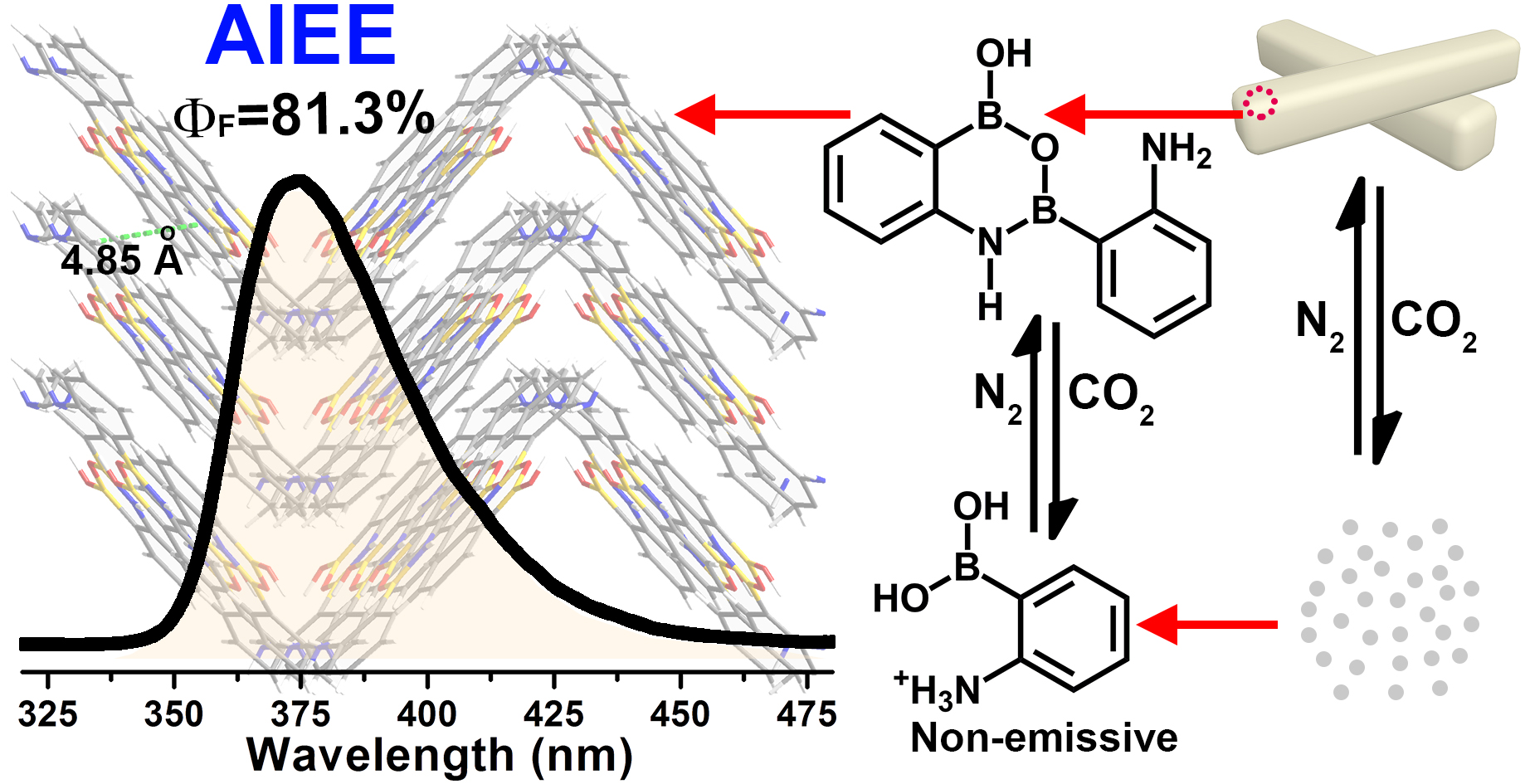Xiaopei Li, Dongdong Wang, Yongjie Zhang, Wenqi Lu, Songqiu Yang, Guangjin Hou, Zhenchao Zhao, Haijuan Qin, Yahui Zhang, Minmin Li and Guangyan Qing*
Chem. Sci. 2021, 12, 12437
Aromatic molecules have been the focus in the aggregation−induced enhanced emission (AIEE) research, which opens up an avenue to obtain novel luminescent materials with high solid−state emission efficiencies, for their high emission efficiencies and high flexibilities. To hamper the intermolecular π−π stacking interactions that would lead to aggregation-caused quenching, AIEE aromatic molecules have been designed with a common feature: bulky molecular size and highly twisted spatial configuration. Can simple aromatic molecules be AIEE active? The answer to this question will largely enrich the AIEE theory and provide new design ideas for AIEE molecules.
Recently, Prof. QING Guangyan's group from the Dalian Institute of Chemical Physics (DICP) of the Chinese Academy of Sciences (CAS) found that 2-aminophenylboronic acid (2-APBA) existed in a dimeric form, and 2-APBA dimer was a highly crystalline AIEE molecule. This work was published in chemical science on August 24th.

Fig. The 2-APBA dimer tending to aggregate into a highly ordered structure is AIEE active. Through alternate treatment with CO2 and N2, 2-APBA can switch between monomer and dimer aggregates driven by dynamic covalent B–N and B–O bonds (Image by Li Xiaopei)
A clear relationship between the ordered molecular packing and AIEE effect of 2-APBA dimer could be built based on further studies. “We are very glad to find this interesting phenomenon that a small and simple molecule, because of the ordered aggregation, could emit extraordinary strong fluorescence with high absolute quantum yield.” said Prof. QING. Furthermore, application of 2-APBA in sensing CO2 based on its reversible AIEE fluorescence quenching and recovery disclosed a new kind of dynamic covalent B–N and B–O bonds. Then, a simple strategy to fabricate a CO2-responsive nanogating system was presented based on the dynamic covalent B–N and B–O bonds. The convergence of B–N and B–O dynamic covalent chemistry and AIEE effect provides a versatile platform for designing and synthesizing AIEE−active organoboron luminescent materials with excellent optoelectronic properties originating from the unique electronic nature and chemical characteristics of boron
This work was supported by the National Natural Science Foundation of China (21775116, 21922411), DICP Innovation Funding (DICP-RC201801), and the LiaoNing Revitalization Talents Program (XLYC1802109).